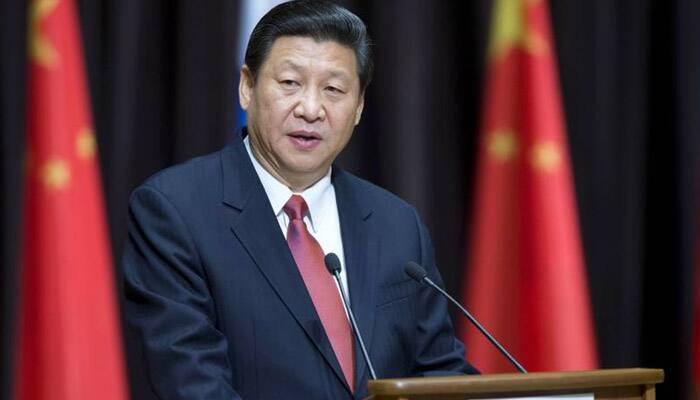Beijing: In the most unambiguous signal yet of a slowdown in China's economy, President Xi Jinping Tuesday ordered officials to ensure that the GDP does not slip below 6.5 percent, putting for the first time a minimum target for the world's 2nd-largest economy to be "moderately prosperous."
China's annual growth should be no less than 6.5 percent in the next five years to realise the goal of doubling GDP and per capita income by 2020, Xi was quoted as saying by the state-run Xinhua news agency explaining a proposal for formulating China's 13th Five-Year Plan at law week's plenary meeting of the ruling Communist Party of China (CPC).
This is the first time that the Chinese leadership came out with a minimum benchmark as the economy in third quarter slipped below 7 percent since the 2009 global meltdown causing uncertainty about the future course of the economy.
To realise the goal of doubling the 2010 GDP and per capita income of both rural and urban residents, China must maintain medium-high growth for the next five years.
"Maintaining a medium-high level of growth is conducive to improving people's livelihoods so that they can truly benefit from the success of the country in comprehensively building a moderately prosperous society," Xi said.
"In the next five years, China's development should not just be focused on growth pace, but also growth volume, and, more importantly, growth quality," said Xi, also the general secretary of the CPC.
China's gross domestic product (GDP) per capita meanwhile has increased to about USD 7,800 registering over USD 800 compared to 2013, said the document of the 13th five plan which starts from next year.
It was approved during plenary body of the ruling Communist Party of China (CPC) last week.
During the current plan from 2011-2015 period, the value added of tertiary industry surpassed secondary industry for the first time as urban residents account for 55 percent of the total population changing China's charter from rural agricultural economy to that of an industrial.
During this period, China's USD 10 trillion economy became the second-largest surpassing Japan.
About the growing rich-poor divide, the 13th plan? document said the income distribution system will be adjusted to narrow the income gap in the next five years.
China aims to "significantly" increase the wages of the low-income population, and increase the proportion of middle-income group, it said.
A more comprehensive income tax system will be accelerated and "grey" income, money obtained from unclear sources, should be regulated, it said.
According to the National Bureau of Statistics, China's Gini index dropped for six consecutive years to 0.469 in 2014.
However, it remains above the international warning line of 0.4, which suggests a comparatively large income gap.
Xi said the new plan should end poverty in the country, lifting remaining 70.17 million out of the poverty by 2020 -- which means one million a month.
As of the end of 2014, China had 70.17 million people in rural areas living below the poverty line. In China, this is set at an annual income of 2,300 yuan (USD 376) by 2010 price standards.
"Eliminating poverty in rural areas is the most difficult challenge to building a moderately prosperous society," Xi said.
The CPC also pledged to improve education, healthcare and public services in poor areas.
Xi said the decision to do away with three-and-a-half-year decade one-child policy to permit two children will balance the population and support development.
The new plan could reduce the pressure of an ageing population, increase labour supply and promote the balance of population development, an official statement said.
Despite this, until the end of August, only 1.69 million couples, or 15.4 percent of the more than 11 million eligible couples, had applied for having a second child, it said.
Over 15 percent of the population is 60 years old or above.
The working-age population has started to decrease and "the trend is continuing," it said.
The new five-year plan will focus on opening up of economy to attract foreign investments and will encourage domestic firms to invest overseas.
Meanwhile, China will continue to promote the "Belt and Road" (Silk Road) initiative through cooperation with countries and regions along the route, and participate in global industrial and equipment manufacturing cooperation, according to the proposal.
The plan will continue to support the inclusion of the RMB in the IMF Special Drawing Right basket and push ahead with capital account liberalisation and the internationalisation of RMB, according to a proposal unveiled today.
At the plenary, leaders agreed to let Yuan "freely tradable and freely usable currency" amid calls by the US to end controls on yuan to benefit Chinese imports.
China has already devalued currency by about 4 percent.
The plan pledged further opening-up of the service sector, including banking, insurance, securities and nursing homes.
Mutual agreement on exempting visa requirements and bilateral investment treaties will be promoted with more countries.
















